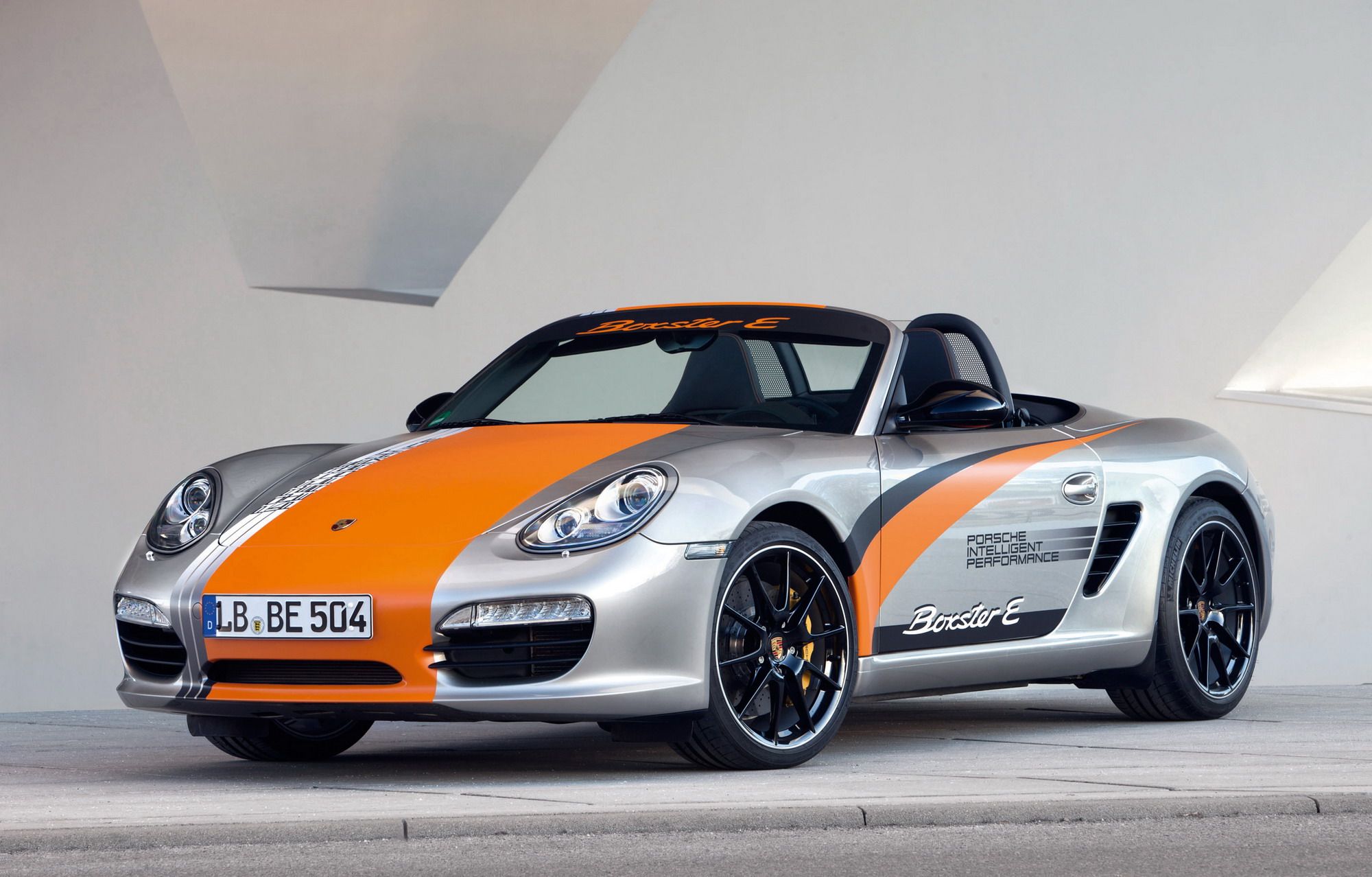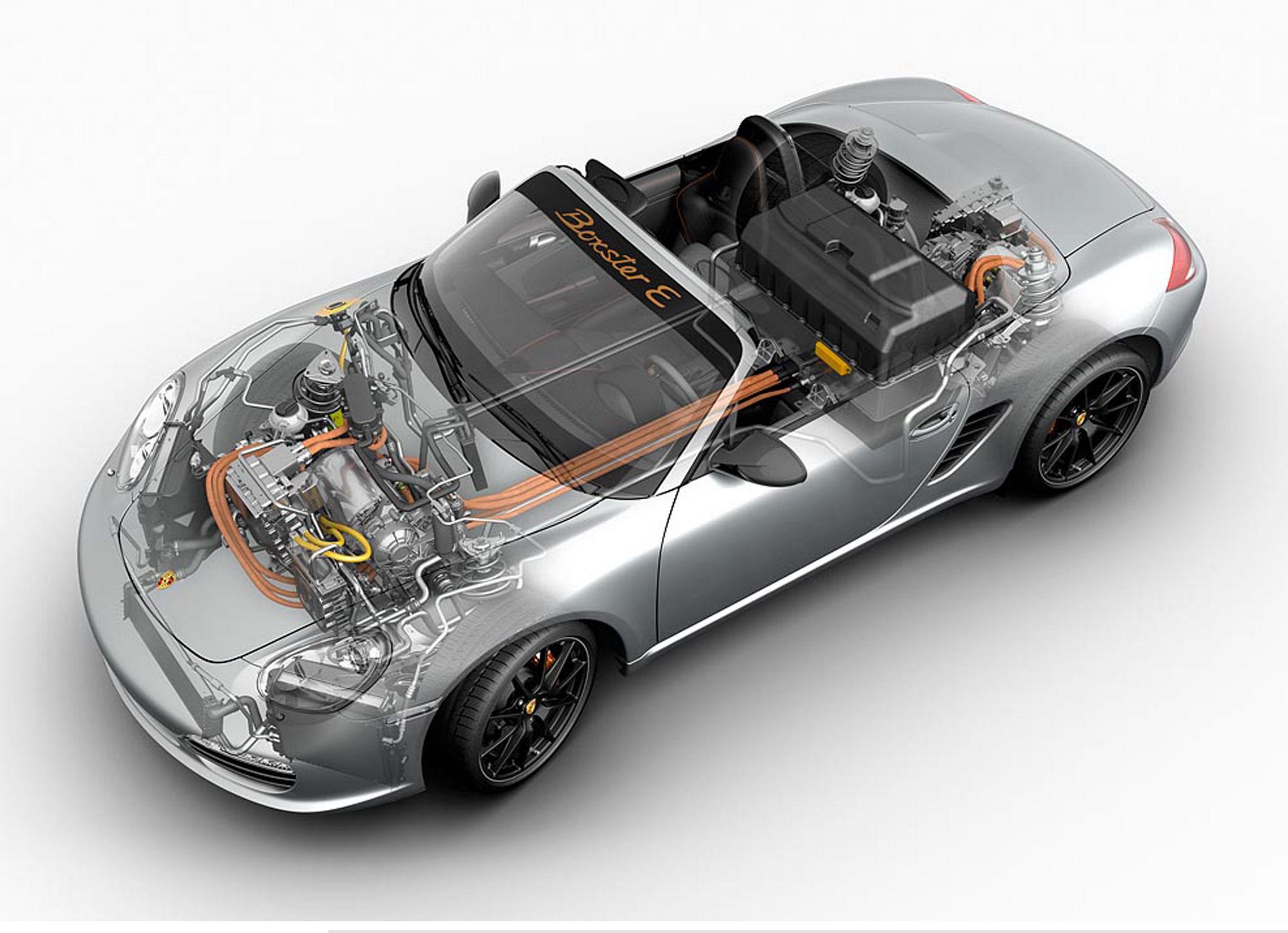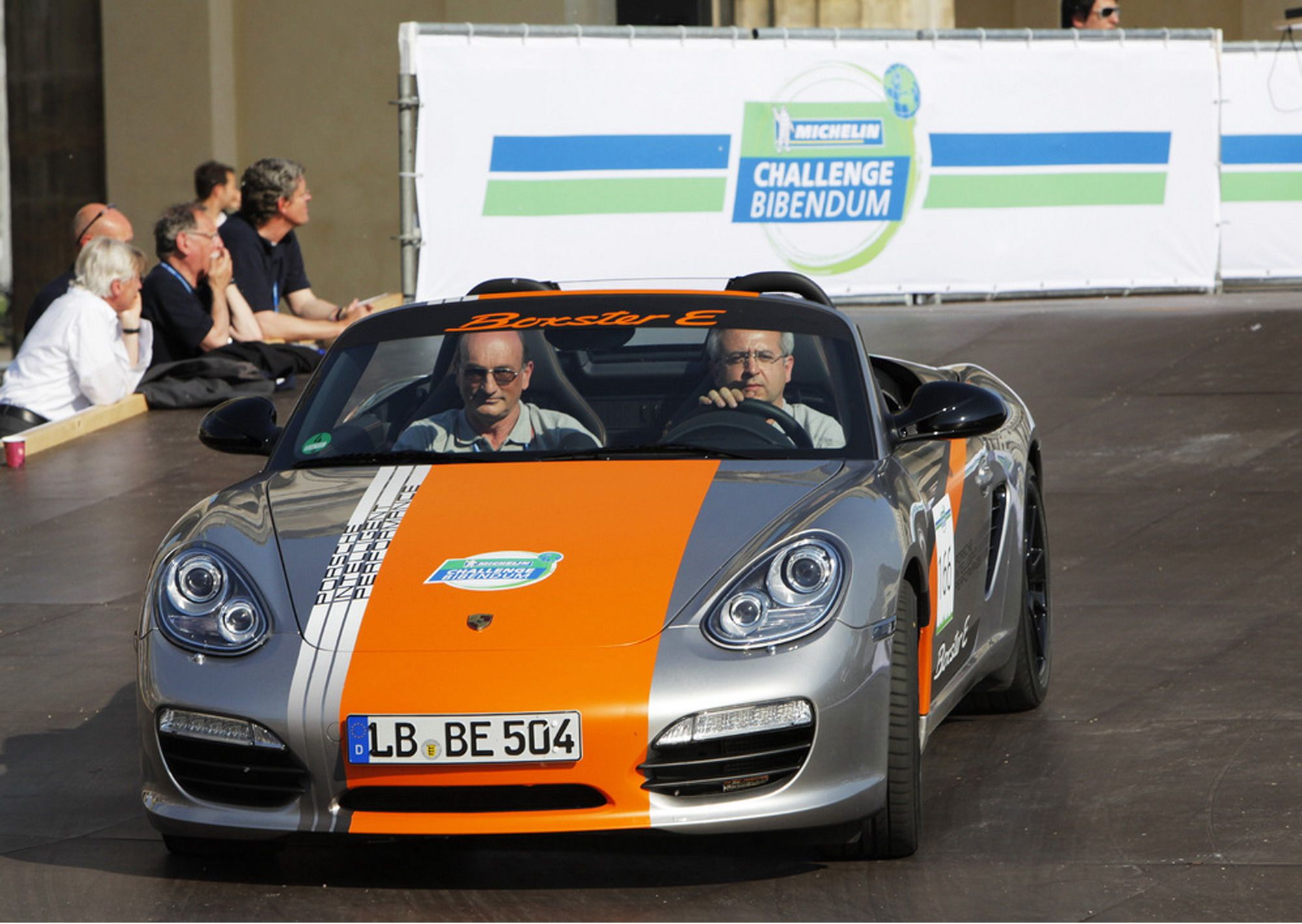When the Porsche Boxster E prototypes were announced back in February, we didn't think we would hear too much about them for awhile. Prototypes can undergo testing for a long time before the vehicles actually make their first appearance, but Porsche proved that it is yet again ahead in the game by introducing the electric sports car at the Michelin Challenge Bibendum in Berlin. Everyone who attended the event had the opportunity to ride around in the vehicle and it seems that the electric Boxster->ke570 illustrated that Porsche is fully capable of creating an electric sports car that can still drive like a Porsche. We're certainly intrigued.
The Boxster E is powered by two independent electric motors - one on the front axle and one on the rear - that develop a total power output of 241 HP and a maximum total torque of 398 lbs-ft at a maximum engine speed of approximately 12,000 rpm. With this amount of power, the car will sprint from 0 to 60 mph in 5.5 seconds and can hit a top speed of 124 mph, all while producing zero tailpipe emissions.
Hit the jump to read more about the Porsche Boxster E.
2013 Porsche Boxster E
- Make: Array
- Model: 2013 Porsche Boxster E
- Engine/Motor: two electric motors
- Horsepower: 241
- Torque: 398
- [do not use] Vehicle Model: Array
Exterior and Interior
The new Porsche Boxster E will be immediately recognized as the mid-engine sports car because not much of the exterior was changed at all. The real work was out in under the hood with the electric motor, battery, and high-voltage technology. These new components, together with the low drag, reduce the driving resistance for optimal range.
Engine
In their quest to create the perfect electric Boxster, Porsche->ke1 actually developed three Boxster E prototypes. The top version is powered bu two electric motors; one on the front axle and one on the rear axle. These two motors develop a total of 241 HP and a peak torque of 398 lbs-ft at a maximum engine speed of approximately 12,000 rpm. With this amount of power, the car will sprint from 0 to 60 mph in 5.5 seconds and can hit a top speed of 124 mph. In addition to a good amount of power on tap for the driver, the high power output of the two motors also means more recovered power is available because more energy can be recovered during braking. This increases the efficiency of the drive unit.
The all wheel drive offered for the Boxster E is successful without mechanical transmission of power. The lack of mechanical transmission is substituted with a central electric control unit that looks after the synchronisation of the two electric motors and controls the drive torque distribution to the front and rear axle. This ensures maximum driving stability and traction.
The second and third prototypes produced by Porsche only have one electric motor driving the rear wheels and produce a total output of 120 HP and a rated torque of 199 lbs-ft. These models can sprint from a standing start to 60 mph in 9.8 seconds, with a top speed of 93 mph. The motors take their power from lithium-iron-phosphate based traction battery fitted in place of the combustion engine.
Pricing
We may have seen more prototype action earlier than we had anticipated, but that doesn't mean that production will be done just as quickly so any set pricing is definitely out of the question. If these prototypes succeed in making it to the line - and we imagine they would considering everyone will go electric at some point - they may get there with a few more changes to fully capture the Porsche vibe. We don't expect this will happen for two or three years.
Competition
Any production Porsche Boxster E vehicles produced will be built to tackle on competitors like the Tesla Roadster. The Tesla is powered by an electric motor that delivers a total of 248 HP and will sprint from 0 to 60 mph in 4 seconds. This competitor is the reason we think Porsche may continue tweaking the prototype until they get a bit more power. Until then, Porsche only has the upperhand in the looks and name recognition departments.








